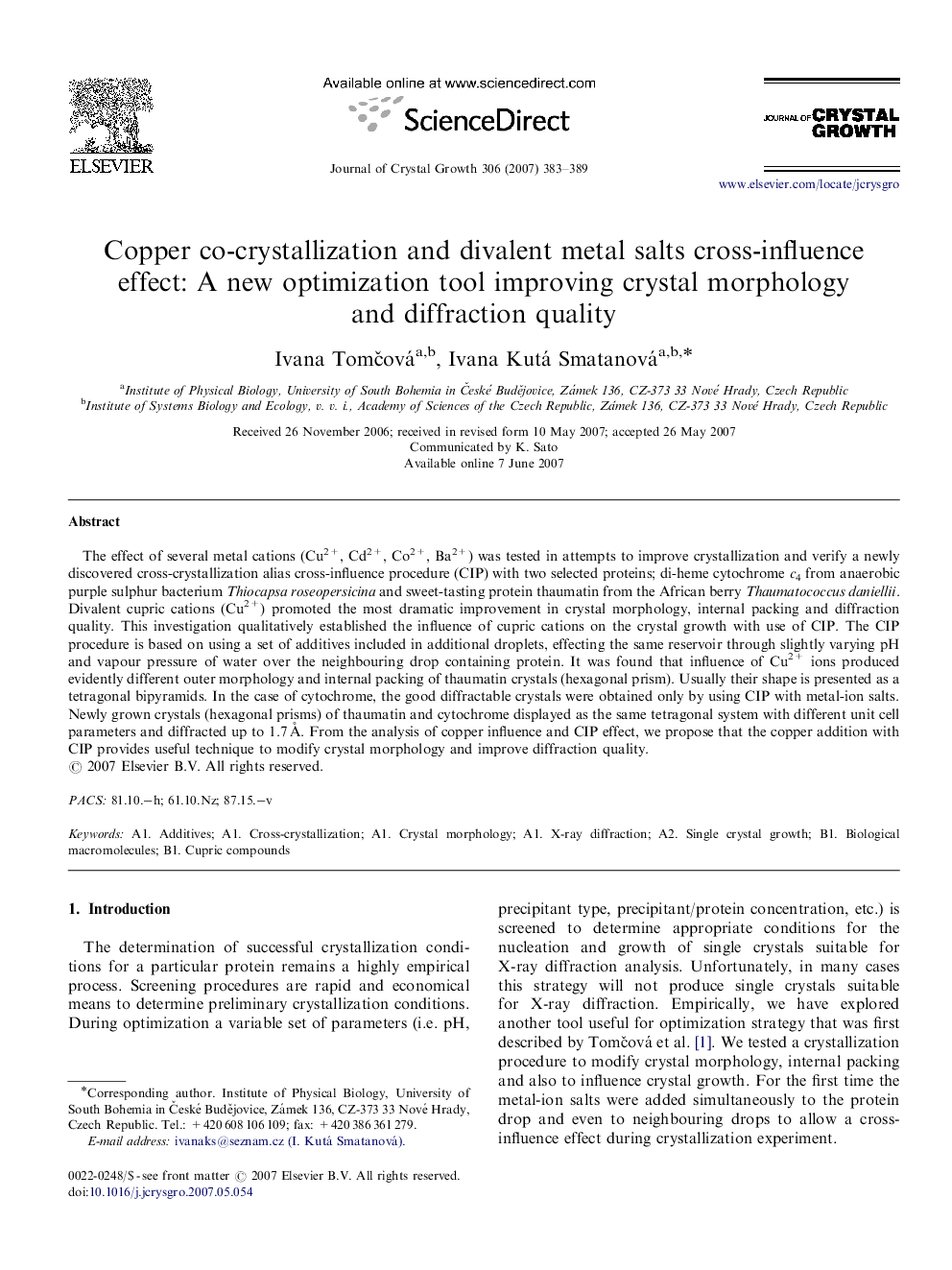| Article ID | Journal | Published Year | Pages | File Type |
|---|---|---|---|---|
| 1794955 | Journal of Crystal Growth | 2007 | 7 Pages |
Abstract
The effect of several metal cations (Cu2+, Cd2+, Co2+, Ba2+) was tested in attempts to improve crystallization and verify a newly discovered cross-crystallization alias cross-influence procedure (CIP) with two selected proteins; di-heme cytochrome c4 from anaerobic purple sulphur bacterium Thiocapsa roseopersicina and sweet-tasting protein thaumatin from the African berry Thaumatococcus daniellii. Divalent cupric cations (Cu2+) promoted the most dramatic improvement in crystal morphology, internal packing and diffraction quality. This investigation qualitatively established the influence of cupric cations on the crystal growth with use of CIP. The CIP procedure is based on using a set of additives included in additional droplets, effecting the same reservoir through slightly varying pH and vapour pressure of water over the neighbouring drop containing protein. It was found that influence of Cu2+ ions produced evidently different outer morphology and internal packing of thaumatin crystals (hexagonal prism). Usually their shape is presented as a tetragonal bipyramids. In the case of cytochrome, the good diffractable crystals were obtained only by using CIP with metal-ion salts. Newly grown crystals (hexagonal prisms) of thaumatin and cytochrome displayed as the same tetragonal system with different unit cell parameters and diffracted up to 1.7Â Ã
. From the analysis of copper influence and CIP effect, we propose that the copper addition with CIP provides useful technique to modify crystal morphology and improve diffraction quality.
Keywords
Related Topics
Physical Sciences and Engineering
Physics and Astronomy
Condensed Matter Physics
Authors
Ivana TomÄová, Ivana Kutá Smatanová,
